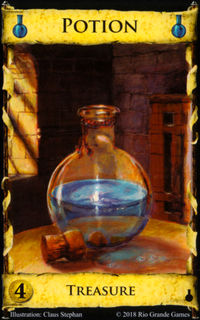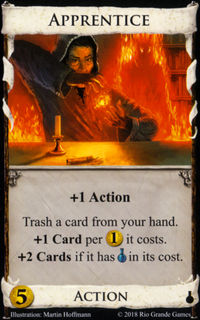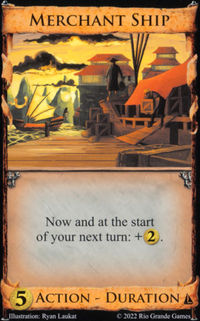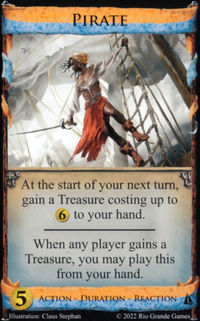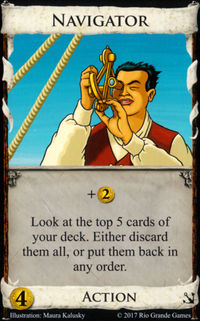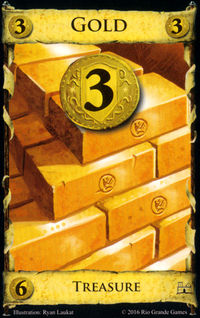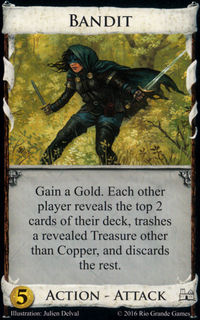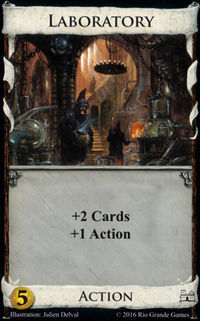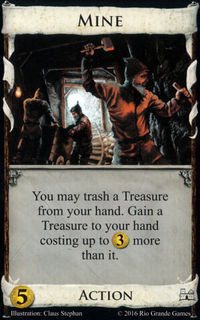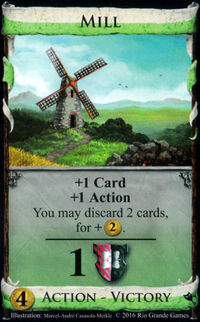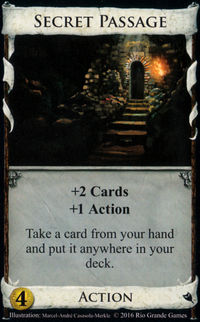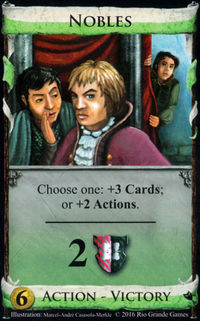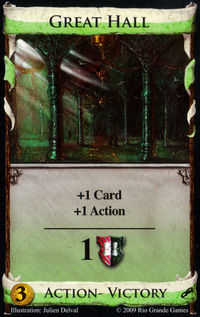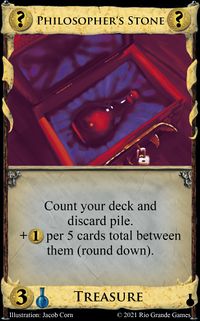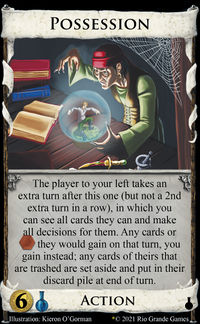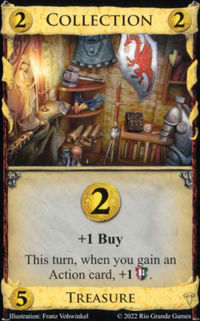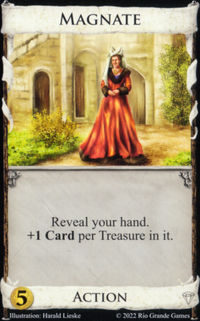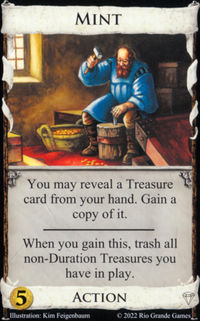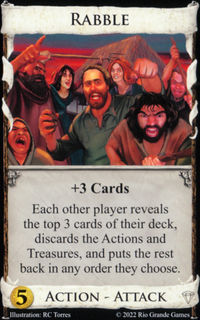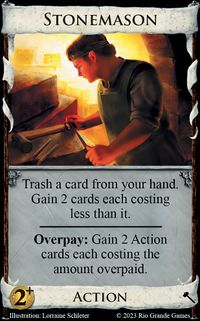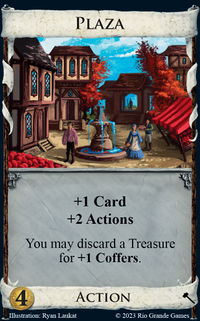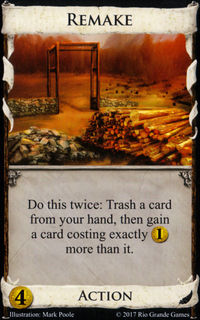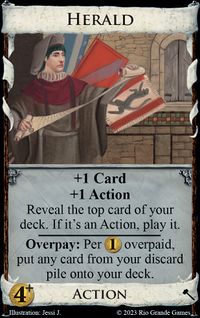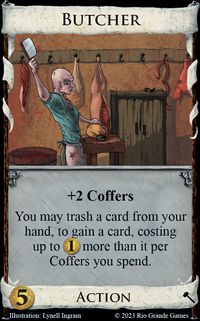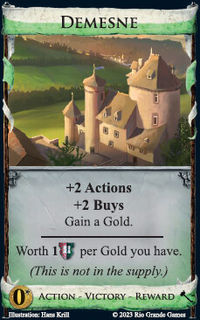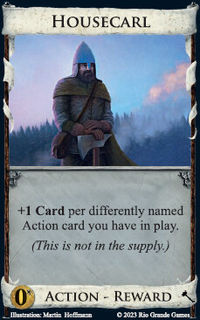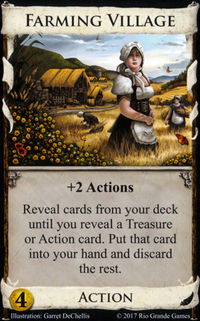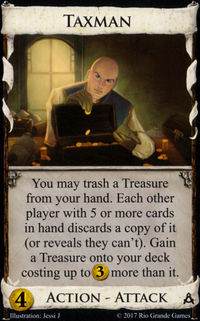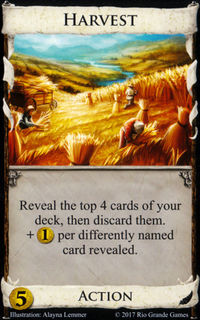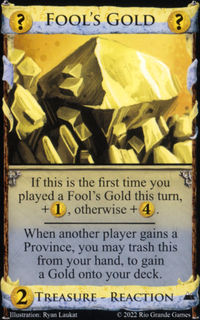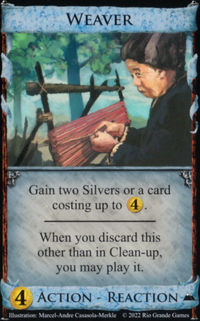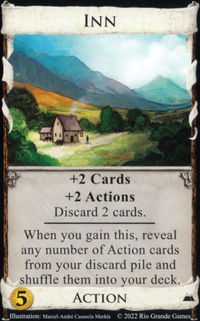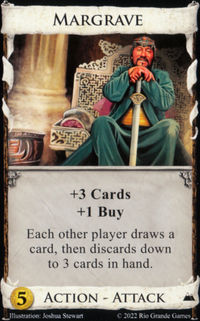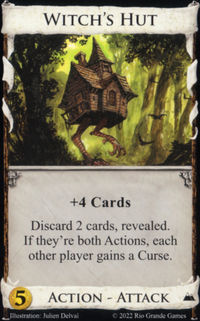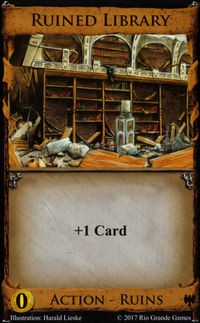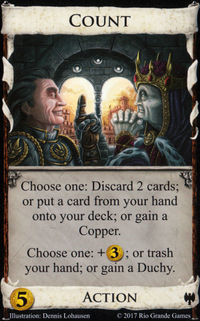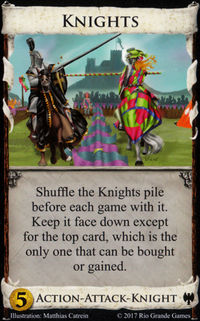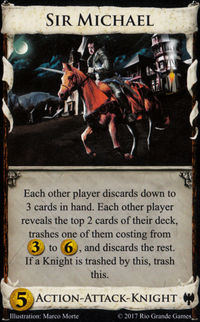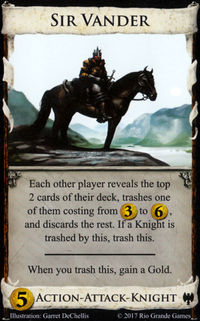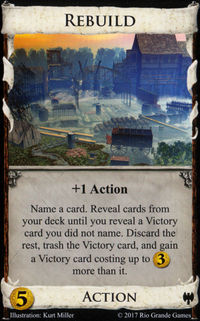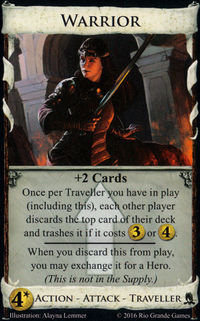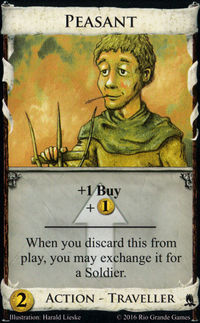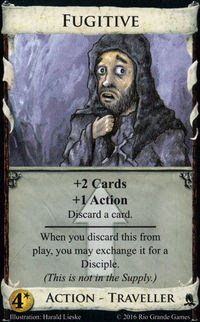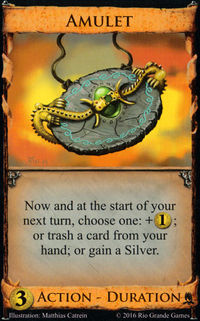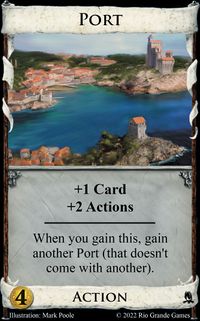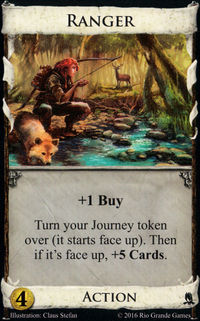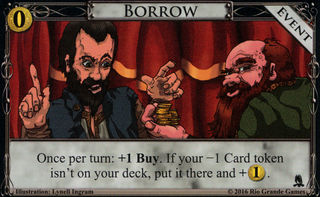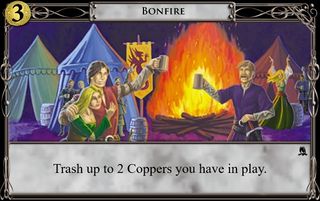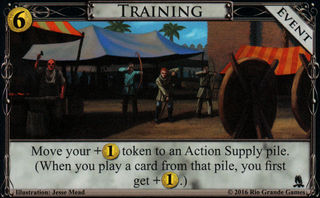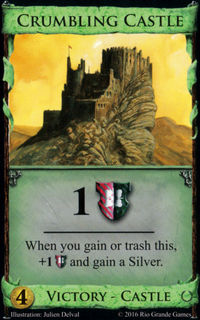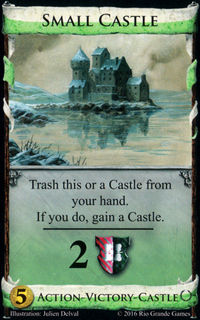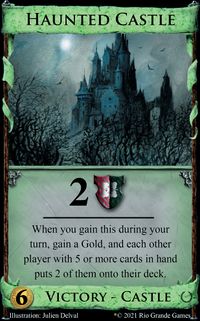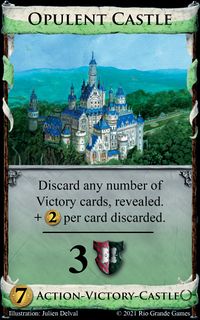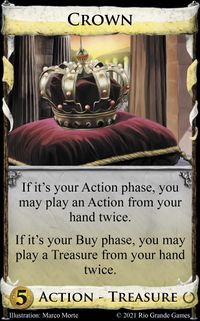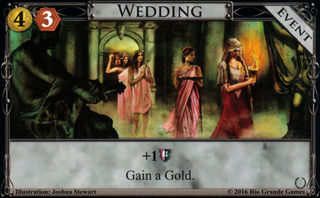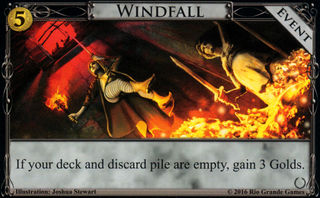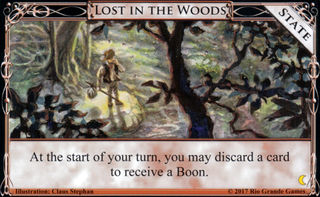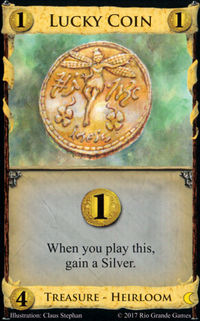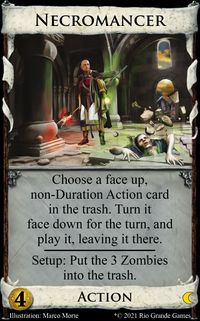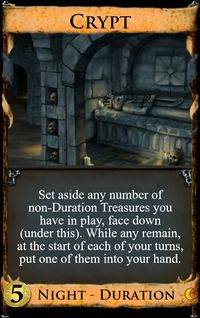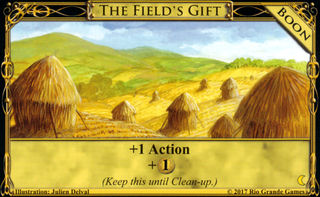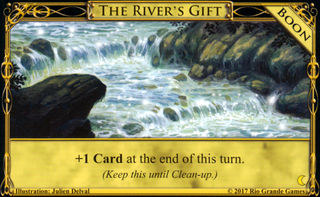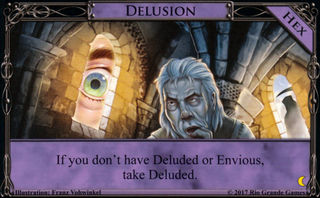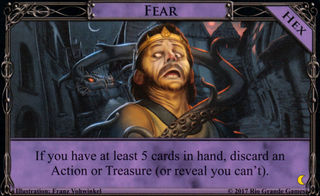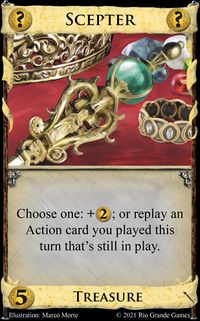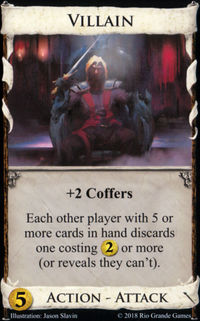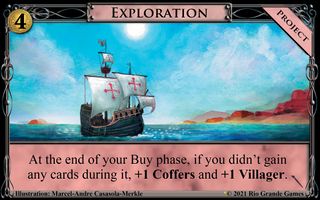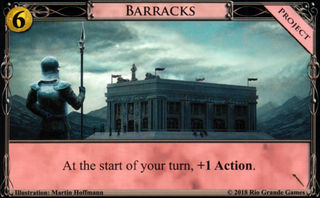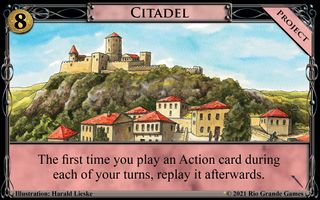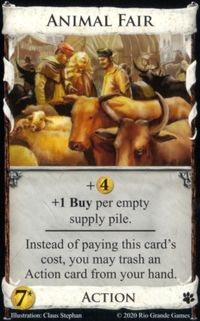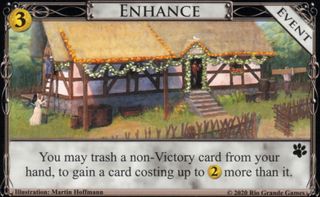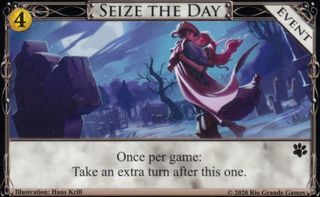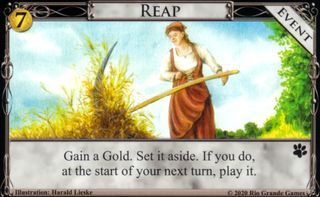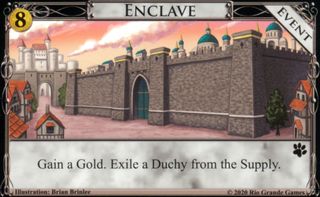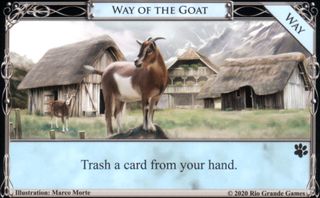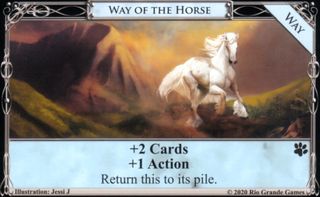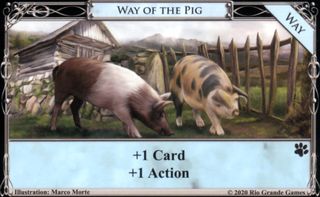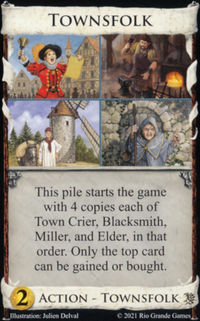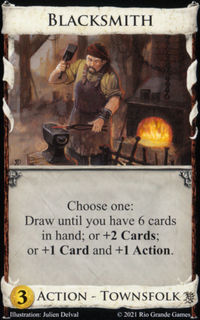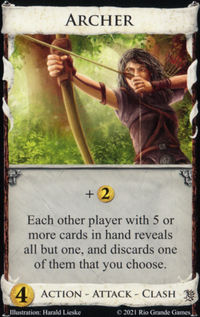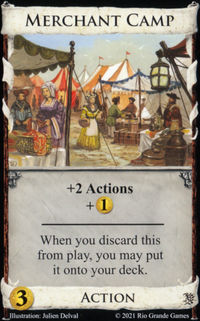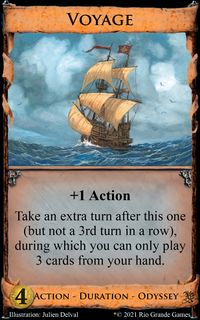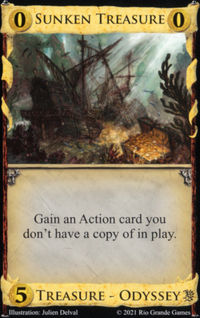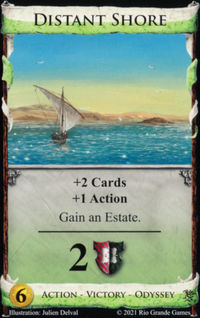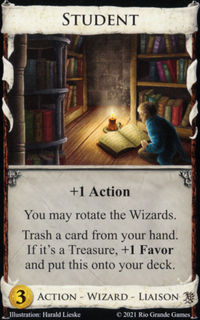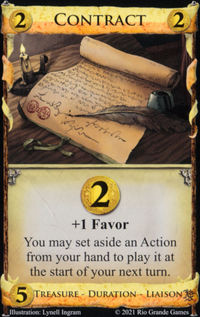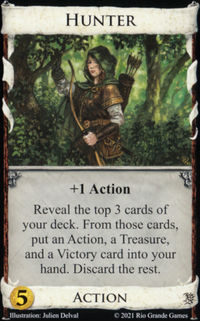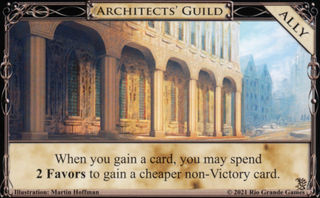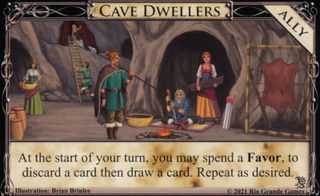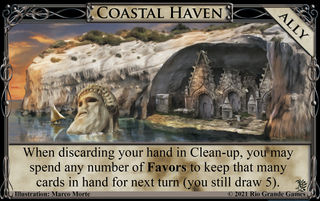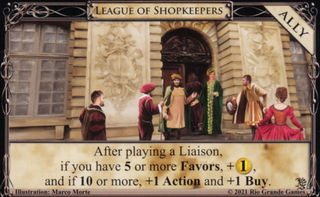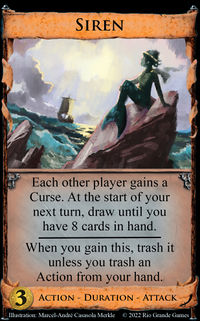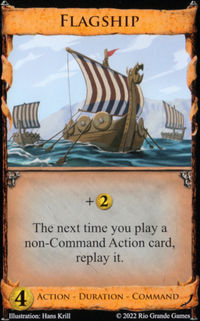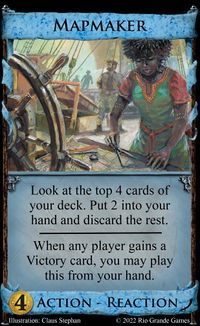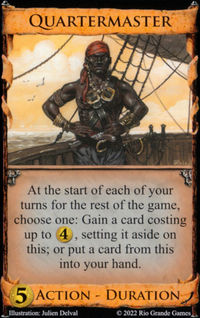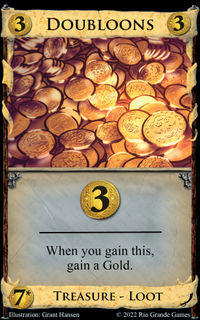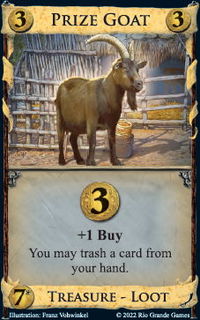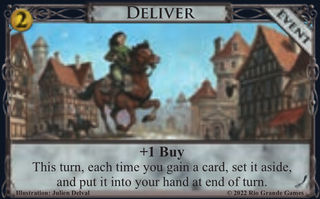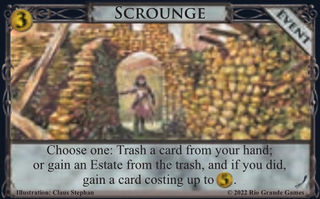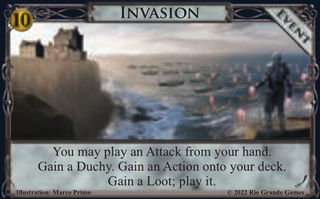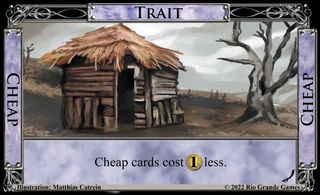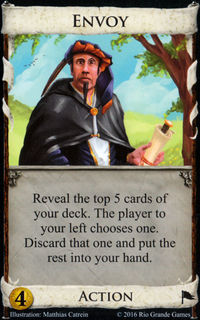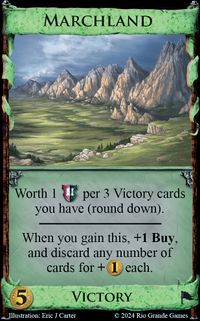Embargo
| Embargo | |
|---|---|
 | |
| Info | |
| Cost | |
| Type(s) | Action |
| Kingdom card? | Yes |
| Set |
Seaside |
| Illustrator(s) | Harald Lieske |
| Card text | |
|
+ Trash this to add an Embargo token to a Supply pile. (For the rest of the game, when a player buys a card from that pile, they gain a Curse.) | |
Embargo is an Action card from the first edition of Seaside. It is a one-shot terminal Silver, which adds a penalty to a Supply pile—whoever buys a card from that pile gains a Curse. This penalty can be avoided with gainers.
It was removed from the second edition of Seaside. Its successor/replacement is Blockade.
Contents |
FAQ
Official FAQ
- The token can go on any Supply pile - a Kingdom card pile such as Embargo, or a base card pile such as Silver.
- The token modifies the pile, so that anyone buying a card from that pile gains a Curse.
- This even affects the player who placed the Embargo token.
- This is cumulative; with three Embargo tokens on a pile, buying a card from that pile will give you three Curses.
- Embargo tokens do not do anything if a card is gained without being bought, such as with Smugglers, or if the Curse pile is empty.
- Embargo tokens are not counter-limited; use a replacement if necessary.
- If you Throne Room Embargo, you will get + but only place one token, since you can only trash Embargo once.
Other Rules clarifications
- If there are multiple Embargo tokens on a pile, each Curse gain from buying from that pile happens separately, which allows other when-buy triggers (such as the pre-errata version of Haggler's) to activate in between Curse gains.
Strategy
Before it was removed, Embargo was a one-shot terminal silver and also offered an effect that disincentivized or punished buying the target card that you chose by distributing Curses. Making good use of this effect is difficult, as the prime target in terms of punishing your opponents is likely to be a card that you also want to get many copies of. Therefore, Embargo is usually rather weak; when gained, it may be used primarily for the cheap one-shot rather than as a curser, and placing the token on an inconsequential pile may be the best choice. Using it in such a manner can be relevant in the opening, when you may want the boost in economy but don’t want a Silver in your deck as a long-term stop card.
The value of and best target for the Embargo token are dependent on several factors:
- Divergent strategies: if an opponent has already committed to a particular strategy that you don’t want to follow, you gain an advantage by creating the penalty. For example, if an opponent has already gained a Potion for Alchemist and you plan to draw by other means, there is an obvious target.
- Predictable patterns: you need to anticipate the importance of certain cards to you and to your opponents, to decide which cards are most likely to be worth Embargoing; this is often easier when there are centralizing cards that your opponents would want multiple copies of. For example, the only non-terminal draw card in a given Kingdom could be a good Embargo target.
- Methods of evasion and unsuitable targets: Embargo is significantly weaker if there are ways for your opponents to avoid buying the targeted card, e.g. using gainers. It is also ineffective against an opponent whose strategy makes heavy use of Events or whose strategy can be easily modified to avoid extensive use of the affected card.
- Curse handling: giving out Curses with Embargo is more impactful the harder it is to get rid of them again, or at least draw through them.
The best case scenario—that the use of specific cards by your opponents will be highly divergent from your own, easily predictable, and hard to divert from—is very unusual, and so more often you’ll have to judge if Embargo’s marginal upside outweighs its downsides (mostly that it’s a low-impact terminal stop card).
Other than these specific cases, the main use case for Embargo is when you’re ahead on key cards. As an example, in the early game if you open with Embargo/Silver and hit a pricepoint before your opponents, buy the important card (e.g. Apprentice), and then are able to Embargo that card, you’ll be fairly far ahead as their first copy of that card would come with a Curse. This can also happen if you have a / opening split. The same idea applies if you have one copy of, for example, the only village and your opponents have none, as even if you split the pile evenly your opponents have to take more Curses than you do. Another use case comes into play if you’re significantly ahead on deck control: if you will have a much easier time getting rid of the Curses, they will affect your opponents more even if you take the same number as them.
External strategy articles
Note: Article(s) below are by individual authors and may not represent the community's current views on cards, but may provide more in-depth information or give historical perspective. Caveat emptor.
Versions
English versions
| Digital | Text | Release | Date | |
|---|---|---|---|---|
 |
 |
+ Trash this card. Put an Embargo token on top of a Supply pile. When a player buys a card, he gains a Curse card per Embargo token on that pile. |
Seaside | October 2009 |
 |
 |
+ Trash this. Add an Embargo token to a Supply pile. (For the rest of the game, when a player buys a card from that pile, they gain a Curse.) |
Seaside (2017 printing) | July 2017 |
 |
+ Trash this. If you did, add an Embargo token to a Supply pile. (For the rest of the game, when a player buys a card from that pile, they gain a Curse.) |
2019 Errata | September 24, 2019 | |
 |
 |
+ Trash this to add an Embargo token to a Supply pile. (For the rest of the game, when a player buys a card from that pile, they gain a Curse.) |
Seaside (2020 printing) | October 2020 |
Other language versions
Trivia
Secret History
Retrospective
Second Edition Removal







